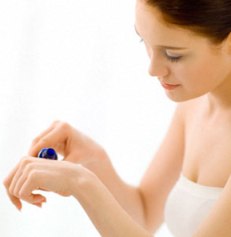Skin is one of the least-cared for, but most exposed parts of the body. Whether you are a youngster or a middle-aged aging adult, you need to exfoliate your skin regularly to look young and fresh. But exfoliation is not that easy. Now, with the advent of modern technology, too many exfoliating products clog the market place and the customer often does not know which one to choose and which one to leave out. It is always better to choose a natural option to synthetic or company-manufactured options. This article will focus on how to exfoliate skin using a natural facial scrub.
Why exfoliate? Before we proceed to make a recipe, we need to first understand why we need to exfoliate. Exfoliation is removing off dead skin on the surface to bring out the young, healthy skin to the top. You exfoliate if you find your skin dull, dry or flaky or old. Yes, exfoliation is a great anti-aging cure too. All you need to do to avoid aging of skin is to exfoliate regularly and keep the shine of your skin in top form. But there are certain issues to be faced while exfoliating. People with problem skin need to careful while engaging in skin exfoliation. This is because, instead of removing dead skin, exfoliation may irritate existing skin and end up aggravating your existing skin condition.
However, for the aged, skin exfoliation helps by increasing blood circulation and thereby, proper functioning of the skin and body. Generally, exfoliation can be done every 14 days. In cases of problem skin, you need to avoid frequent exfoliation.
Exfoliation and essential oils: What do essential oils got to do with skin exfoliation? Well, they do have a major role to play. The chief ingredient in a facial scrub is often an essential oil. Even commercial scrubs have essential oils in their ingredients list. This is because of the natural skin-healing properties of some essential oils. Owing to their herbal properties, essential oils are soft and tender on skin when used in the appropriate proportion. They not just invigorate the skin, but leave it glowing and healthy. This is why essential oils find a lot of usage in body massaging, hair anointing and bathing.
How to make natural, facial scrub: In a market looming large with commercial products, natural facial scrubs stand out of the crowd. Though not all advertised herbal products are 100% herbal, a homemade facial scrub is completely herbal and natural. Below is a recipe on how to make a natural, facial scrub:
Ingredients: Raw oats, honey, basil oil, tea tree oil, apple, cider, vinegar etc.
Process: Crush 2 to 3 teaspoonfuls of raw oats in a grinder. Add pure honey and ¼ teaspoon of apple, cider, vinegar to the crushed dry oats. Mix all the ingredients to form a smooth mixture. Add honey if needed and add basil oil (1 drop) to the mixture. If you have a problem skin, you can replace the basil oil with tea tree oil to promote aggressive healing.
How to use: When the paste-like facial scrub is ready, wash and towel-dry your face and apply the scrub on it. Use circular motions for application and let it rest for about 15 minutes. After the particular timeframe, wash with lots of tepid water and towel dry the face again. You will notice your face to be fresh and young than before.









